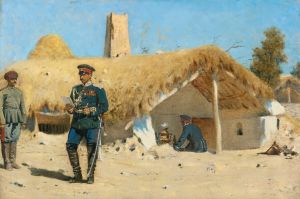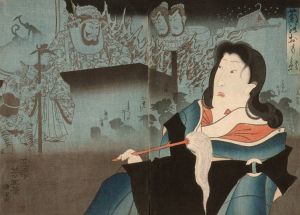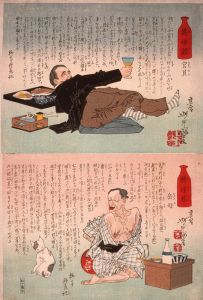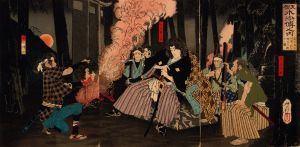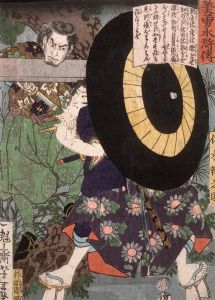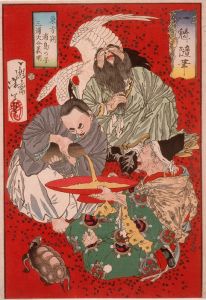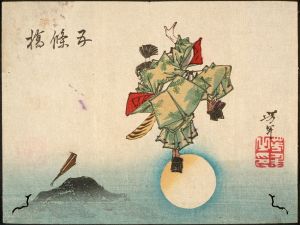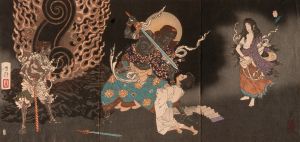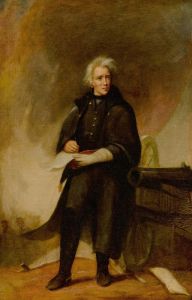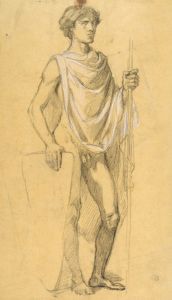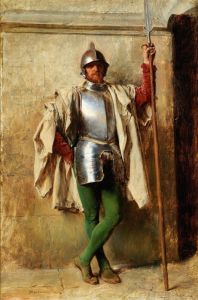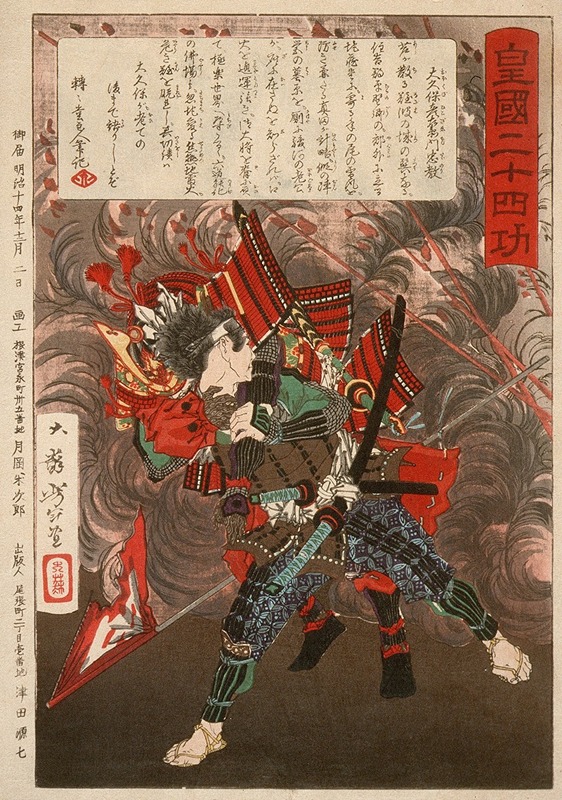
Ōkubo Hikozaemon Tadanori Rescuing Tokugawa Ieyasu
A hand-painted replica of Tsukioka Yoshitoshi’s masterpiece Ōkubo Hikozaemon Tadanori Rescuing Tokugawa Ieyasu, meticulously crafted by professional artists to capture the true essence of the original. Each piece is created with museum-quality canvas and rare mineral pigments, carefully painted by experienced artists with delicate brushstrokes and rich, layered colors to perfectly recreate the texture of the original artwork. Unlike machine-printed reproductions, this hand-painted version brings the painting to life, infused with the artist’s emotions and skill in every stroke. Whether for personal collection or home decoration, it instantly elevates the artistic atmosphere of any space.
Tsukioka Yoshitoshi was a prominent Japanese artist known for his work in ukiyo-e, a genre of woodblock prints and paintings that flourished in Japan from the 17th through 19th centuries. One of his notable works is the print titled "Ōkubo Hikozaemon Tadanori Rescuing Tokugawa Ieyasu." This artwork is part of Yoshitoshi's series that often depicted historical events, legendary figures, and scenes from Japanese folklore.
Ōkubo Hikozaemon Tadanori was a samurai who served under Tokugawa Ieyasu, the founder of the Tokugawa shogunate, which ruled Japan from 1603 to 1868. He is celebrated in Japanese history for his loyalty and bravery. The specific event depicted in Yoshitoshi's print involves Ōkubo Hikozaemon's act of rescuing Tokugawa Ieyasu, although the exact historical details of this rescue are not well-documented in historical texts. The narrative likely draws from popular stories and dramatizations that highlight the valor and dedication of samurai serving their lords.
Yoshitoshi's work is characterized by its dynamic composition and vivid detail, capturing the drama and intensity of the scene. His prints often reflect a deep appreciation for the samurai code of honor and the historical narratives that shaped Japan's cultural heritage. In "Ōkubo Hikozaemon Tadanori Rescuing Tokugawa Ieyasu," Yoshitoshi employs bold lines and contrasting colors to emphasize the heroism of Ōkubo Hikozaemon. The print would have been part of a larger series or collection that explored similar themes of loyalty, bravery, and historical events.
Yoshitoshi's career spanned a period of significant change in Japan, as the country transitioned from the Edo period to the Meiji era. This was a time when Japan was opening up to Western influences and modernizing rapidly. Despite these changes, Yoshitoshi remained committed to traditional Japanese art forms, and his work is often seen as a bridge between the old and the new. His prints are celebrated for their technical excellence and emotional depth, capturing the complexities of a society in transition.
The ukiyo-e tradition, to which Yoshitoshi belonged, was known for its ability to convey stories and emotions through visual art. Artists like Yoshitoshi played a crucial role in preserving Japanese history and folklore through their work, ensuring that these stories continued to be told and appreciated by future generations. Today, Yoshitoshi's prints are highly valued by collectors and art historians, who regard them as important cultural artifacts that offer insight into Japan's past.
In summary, "Ōkubo Hikozaemon Tadanori Rescuing Tokugawa Ieyasu" by Tsukioka Yoshitoshi is a significant work that reflects the artist's skill in depicting historical and legendary narratives. Through his use of dynamic composition and attention to detail, Yoshitoshi captures the essence of samurai loyalty and bravery, themes that resonate deeply within Japanese culture. His work remains an enduring testament to the rich artistic and historical traditions of Japan.





